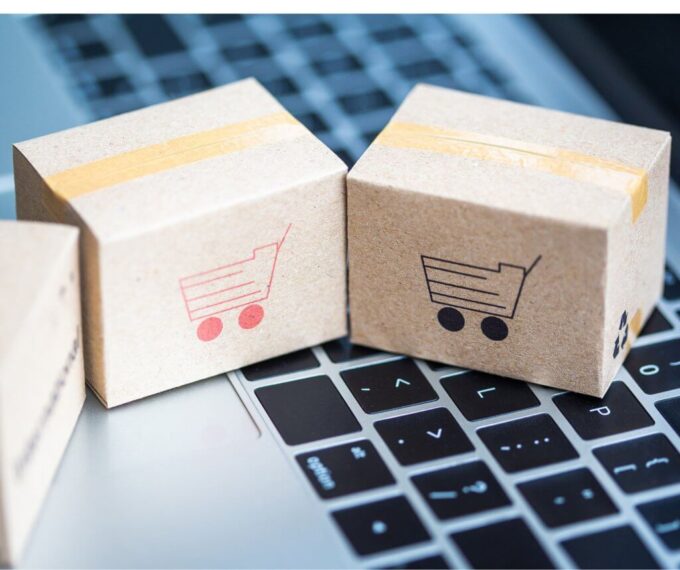If you want to become your own boss or want a simple and profitable side hustle, you want to ensure that your product gets in front of as many potential buyers as possible. One way of doing that is by making your product available on Amazon.
Selling on Amazon can be an immensely lucrative opportunity for you. However, it isn’t as easy as some online marketers would have you think. To sell and sell massively requires a lot of dedication, hard work, research, and an adequate budget. Thousands of people have quit their Amazon experience before they ever have a chance to succeed.
Understanding all the aspects involved in transferring the ownership of your account is critical to your success. Click here to help you stand out on a platform that has over 70,000 new products listed every day, we’ve created a 10-step guide to help you maximize your potential and build a great business.
1. Find Out What to Sell on Amazon

Chances are you might have already discovered what you want to sell for you to want to register as a seller on Amazon. If so, feel free to skip over to the next step but if you haven’t, read on.
What you decide to sell on Amazon is the most important part of the entire process. Make sure you conduct in-depth research on the product’s functionality, its potential market, and possible competitors. This information and the decisions you make from it will determine the success or the failure of your project.
2. Create a Business Plan
To sell on Amazon, or anywhere for that matter, you need to have a business plan in order so that everything is on the right track. A business plan should detail your strategy, market analysis, marketing, financial plan, business mission, and what you’re trying to achieve in terms of product sales.
3. Where Will You Source Your Product

Once you’ve established the product you want to sell, you need to find out how you’re going to source your product, the minimum order quantity (MOQ), product price, and shipping charges if any.
You can sell by buying products in bulk from a producing brand at a wholesale price such as Apple or Nike then selling them on Amazon. You could also find a manufacturer who produces a generic product in bulk at a cheap price. You can tweak the product, add your logo, and sell it as your own brand.
One method which can be ideal for newbies on Amazon is through retail arbitrage or RA.
This is when a seller visors retail stores such as Target or Walmart, buys products at discounts, then resells them from Amazon at a profit. For newbies, this is a great way of familiarizing themselves with the process of selling on Amazon.
If you want to know more about building a sales team, click here.
4. Stock up on Product
Once you’ve decided on how and where to get your product, you need to stock enough product, at least 2 months worth of inventory. If you’ll be ordering from an online supplier, make sure you use a safe method of payment.
5. Open Your Amazon Account

Once you’re established on what you want to sell, you’ll need to open a seller account on Amazon. The seller account will be the hub of your online business. This is where you’ll add product listings, view your sales reports, and manage your inventory.
Make sure you use a valid phone number, email address, as well as tax information, and bank details.
6. Choose a Fulfillment Method
The next step will involve you choosing the method of fulfillment for your items. Fulfillment will involve how you store, package, and ship products to your customers. The top options available on Amazon include Fulfillment by Merchant (FBM) and Fulfillment by Amazon (FBA).
Fulfillment by Merchant (FBM) involves you listing your products on Amazon and then handling all aspects of fulfillment. You will be accountable for any damaged, missing, or late, packages.
Fulfillment by Amazon (FBA) will involve Amazon storing your products in a fulfillment center. The company will then package and ship your products after a customer makes an order. Amazon also takes care of all customer service concerns. However, there are extra fees involved.
7. List Your Product

This step involves you creating your product listing via your Amazon seller account. The information you list here is what the shopper will see on the product page before they buy your product. Make sure you detail well what your product is, what it does, and why people need to buy it.
8. Optimize Your Product Listing
The goal is to make sure your product listing reaches the most number of ideal consumers who can buy your product. To create a listing that gives you a high search ranking that attracts customer traffic, you need to conduct thorough keyword research. Write a product title that uses those keywords to improve your ranking.
9. Register With the Amazon Brand Registry

Now that you’ve listed your product on Amazon, you should register your brand with the Amazon Brand Registry. This simply involves claiming ownership of your products to Amazon. It will give you access to more seller brand marketing features and will add a layer of protection to your product listings.
10. Sign up on Rebaid
A great strategy of selling on Amazon is signing up as a seller on Rebaid. You can use the platform to create Amazon product rebate promotions which are visible to thousands of viable buyers.
The website supports ranking strategies such as search-find-buy (SFB) steps and super URLs. Rebaid also offers shopper messaging through SMS text service which can be used to invite shoppers to subscribe to newsletters, place reviews, or brand follow social media pages.
Start Driving Sales

Registering on Amazon is a great way of selling goods as it plugs you into a thriving market and buyer network. As an eCommerce platform, Amazon allows businesses to launch completely new brands while it does all the heavy lifting.
Once you’ve successfully listed your product and have stocked up on products ready to ship, you should be free to go live. To boost your sales and revenue, you can run pay-per-click (PPC) campaigns to increase your visibility.
Congratulations! Your business experience as an Amazon seller officially starts now.








